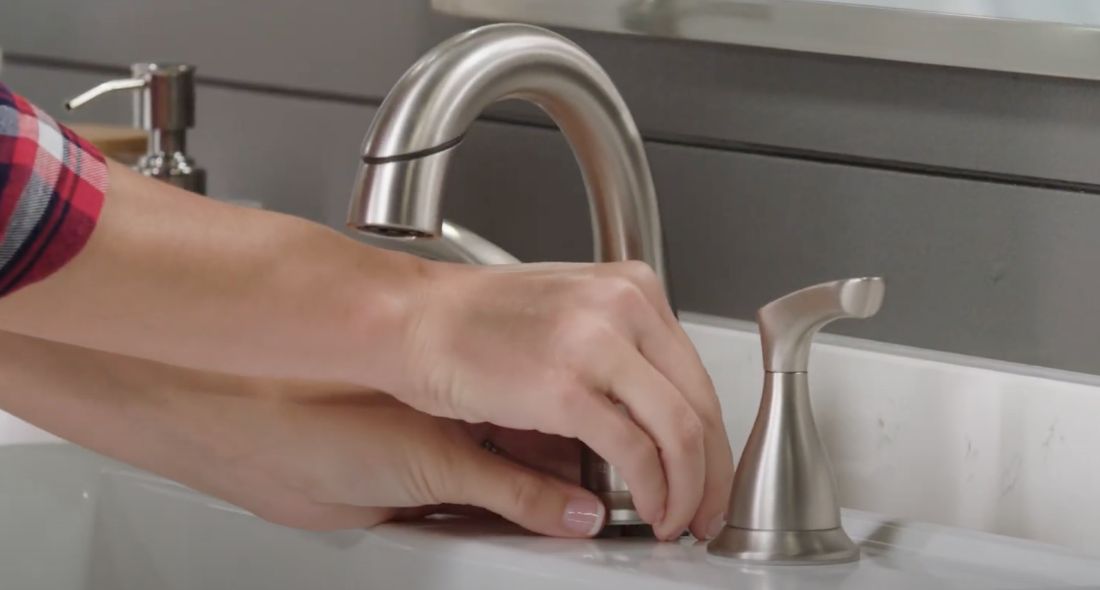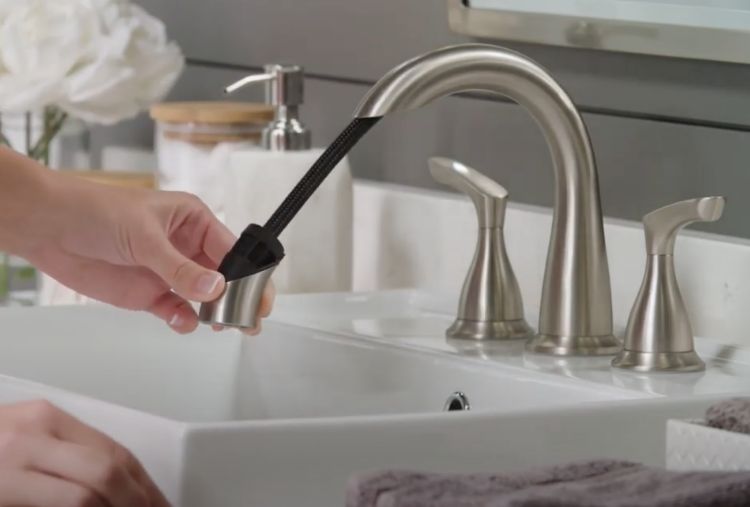Why It's Essential to Repair a Broken Faucet
Why It's Essential to Repair a Broken Faucet
Blog Article
Any individual may have his or her own idea about Why Are My Faucets Dripping (And Can I Fix It Myself)?.

Trickling faucets might look like a small trouble, yet their influence goes beyond just the nuisance of the noise. From wasting water to incurring unnecessary economic costs and health and wellness risks, disregarding a trickling tap can lead to various consequences. In this short article, we'll explore why it's essential to resolve this usual household problem immediately and successfully.
Waste of Water
Environmental Effect
Trickling faucets add considerably to water waste. According to the Epa (EPA), a single faucet leaking at one drip per secondly can throw away more than 3,000 gallons of water per year. This not just pressures water resources but also impacts environments and wild animals depending on them.
Step-by-Step Overview to Dealing With a Dripping Tap
Devices Needed
Prior to attempting to fix a dripping tap, collect the needed tools, including an adjustable wrench, screwdrivers, substitute components (such as washers or cartridges), and plumber's tape.
Common Tap Issues and Their Solutions
Determine the type of tap and the certain concern triggering the drip. Common troubles include worn-out washing machines, rusty shutoff seats, or damaged O-rings. Refer to manufacturer instructions or online tutorials for step-by-step guidance on repairs.
Financial Costs
Boosted Water Expenses
Beyond the environmental impact, trickling taps can pump up water expenses substantially. The accumulated wastefulness gradually equates into greater energy expenses, which can have been prevented with timely repairs.
Possible Property Damages
Furthermore, long term leaking can lead to harm to components and surfaces bordering the faucet. Water buildup can cause staining, corrosion, and also structural problems if left ignored, resulting in extra repair work prices.
Health Problems
Mold And Mildew and Mold Development
The continuous existence of dampness from a dripping faucet produces an optimal setting for mold and mold development. These fungis not just compromise indoor air quality yet likewise posture health risks, particularly for individuals with respiratory conditions or allergies.
Waterborne Illness
Stagnant water in dripping faucets can become a breeding ground for germs and other pathogens, increasing the threat of waterborne conditions. Pollutants such as Legionella germs thrive in stationary water, possibly causing major diseases when consumed or inhaled.
DIY vs. Specialist Repair service
Benefits and drawbacks of Do It Yourself Repair
While some might attempt to deal with a dripping tap themselves, DIY repair services come with their very own set of difficulties. Without correct knowledge and devices, do it yourself attempts can exacerbate the problem or bring about incomplete repair work, lengthening the problem.
Advantages of Employing a Specialist Plumber
Hiring an expert plumber makes certain that the underlying cause of the dripping faucet is attended to properly. Plumbings possess the proficiency and equipment to identify and repair faucet problems successfully, saving time and minimizing the danger of more damage.
Environmental Obligation
Private Contribution to Conservation
Taking responsibility for fixing trickling faucets aligns with more comprehensive initiatives towards water conservation and environmental sustainability. Every person's activities collectively make a significant influence on protecting valuable sources.
Sustainable Living Practices
By focusing on prompt repairs and adopting water-saving behaviors, individuals contribute to lasting living methods that benefit both existing and future generations.
Safety nets
Regular Maintenance Tips
To avoid trickling taps, perform regular maintenance such as cleaning up aerators, checking for leaks, and changing worn-out parts immediately. In addition, think about setting up water-saving gadgets or upgrading to much more reliable fixtures.
Value of Prompt Services
Attending to trickling faucets as quickly as they're seen protects against further water waste and potential damages, ultimately conserving both water and money in the long run.
Effect On Building Value
Understanding of Well-Maintained Residential Or Commercial Property
Keeping a building in good condition, including attending to upkeep issues like leaking faucets, improves its viewed value and value among potential buyers or renters.
Influence on Resale Value
Characteristics with well-maintained plumbing fixtures, including taps, command greater resale values in the real estate market. Addressing trickling taps can contribute to a favorable perception during residential or commercial property examinations and arrangements.
Final thought
Addressing a trickling faucet exceeds plain comfort; it's an important action toward preserving water, lowering monetary costs, and safeguarding health and building. Whether with do it yourself repair work or expert aid, taking action to take care of trickling taps is a little yet impactful means to advertise liable stewardship of sources and add to a healthier, more sustainable future.
How to Fix a Dripping or Leaky Faucet
A leaking faucet is one of the most common problems that homeowners encounter, but it being commonplace doesn’t make it any less annoying. The constant drip drip drip of a leaking bathtub faucet, showerhead, or sink tap can disturb your home’s serenity. Left neglected, a dripping faucet can also result in higher water bills and discoloration or mold growth in your sink or plumbing fixtures.
Fortunately, you don’t have to be a trained plumber to know how to stop a dripping faucet. With some basic tools, replacement parts, and a little patience, leaky faucet repair is a breeze. In this article, we’ll explain what causes dripping faucets and how you can fix them.
What Causes a Leaking Faucet?
Kitchen and bathroom faucets come in all manner of designs, but most involve some combination of valves, O-rings, seals, and washers. The O-ring is usually the weakest link, but any one of these pieces can wear down over time. Heat, moisture, temperature fluctuations, minerals, mold, and movement can contribute to warping and corrosion, breaking the watertight seal. This just comes with the territory of being a homeowner. Everything is always subject to wear and tear, and some component parts of your appliances and fixtures need to be replaced on occasion. At least replacement O-rings are cheap!
More rarely, dripping faucets can be a symptom of excessively high water pressure. Were this the case in your home, you would probably notice that the leak is not isolated to one faucet. Water pressure issues are harder to resolve on your own. We recommend contacting a professional plumber if you suspect your water pressure is too high.
How to Fix a Dripping Faucet
Pipe wrench or monkey wrench Allen wrench set Screwdrivers Old towel or rag Shut off the water.
Before you do anything, you need to turn off the water to keep from drenching your kitchen or bathroom. You should find a valve under the sink and against the wall. Once you’ve turned this valve, try turning the faucet on to confirm that the water source has been cut off.
If you can’t locate your local valve for the faucet you’re working on, you can always shut off the water to the house at the main valve. Of course, this will prohibit anyone from using the sinks, showers, or toilets while you’re working on the faucet that’s giving you trouble.
Plug or block the drain.
You’ll be disassembling the faucet and removing some small bits of hardware. Plug the drain with a stopper or rag to avoid the possibility of a small screw falling into your P-trap.
Take apart the faucet assembly.
There are several varieties of kitchen and bathroom faucets, each with its own manner of assembly. For detailed instructions on how to disassemble your faucet, you can refer to the fixture’s manual or contact the manufacturer. If you know whether you have a ball, disc, cartridge, or compression faucet, you can find detailed schematics online.
In general, you need to begin by removing the faucet handles. You might notice a small screw that you’ll need to remove with a screwdriver or Allen wrench. If you don’t see any visible securing hardware, it’s likely hidden under a decorative cap that can be unscrewed or popped off with flathead screwdriver.
Remove each piece methodically, consulting a schematic when necessary. Take notes or arrange the pieces in such a way to make it easier to correctly reassemble the faucet later.
Remove the cartridge.
Once you’ve removed the handles and securing hardware, you should be able to remove the valve cartridge or stem. Some cartridges will slide right out. Other faucet models will require you to loosen a nut with a pipe wrench before you can remove the valve stem.
Examine the exposed hardware.
With the cartridge or stem removed, inspect the component parts. Check the rubber O-rings for wear and tear. Also examine the seat washer for corrosion or other damage. These pieces are usually the responsible parties for a dripping faucet, but it’s worth inspecting the other component parts while you have the faucet disassembled.
Find replacement parts.
Once you’ve identified which faucet component has failed, find an identical replacement. Your local hardware store should have O-rings, seat washers, and other standard components in stock. If you have a luxury or uncommon faucet, you may have to contact the manufacturer for a replacement part.
It’s a good idea to take your old parts with you to the hardware store so you can compare them with the store’s inventory and be sure you’re purchasing the correct replacement.
Reassemble the faucet.
With your new parts in hand, reconstruct the faucet and handles. Don’t be tempted to overtighten screws or nuts. You might think this could create a better seal, but it can instead damage or bend a delicate part of the assembly and create a new problem for you.
Turn on the water and test the faucet.
The only thing left to do is test your work. Unplug the sink, turn the water back on, and try the faucet. Congratulate yourself on a job well done!
https://www.libertyhomeguard.com/how-to-fix-a-dripping-or-leaky-faucet/

We hope you liked our article about . Many thanks for taking a few minutes to read through our post. Are you aware of someone else who is interested by Leaky Faucets: Why They Happen & What to Do About Them? Why not share it. Thanks a lot for your time spent reading it.
Report this page